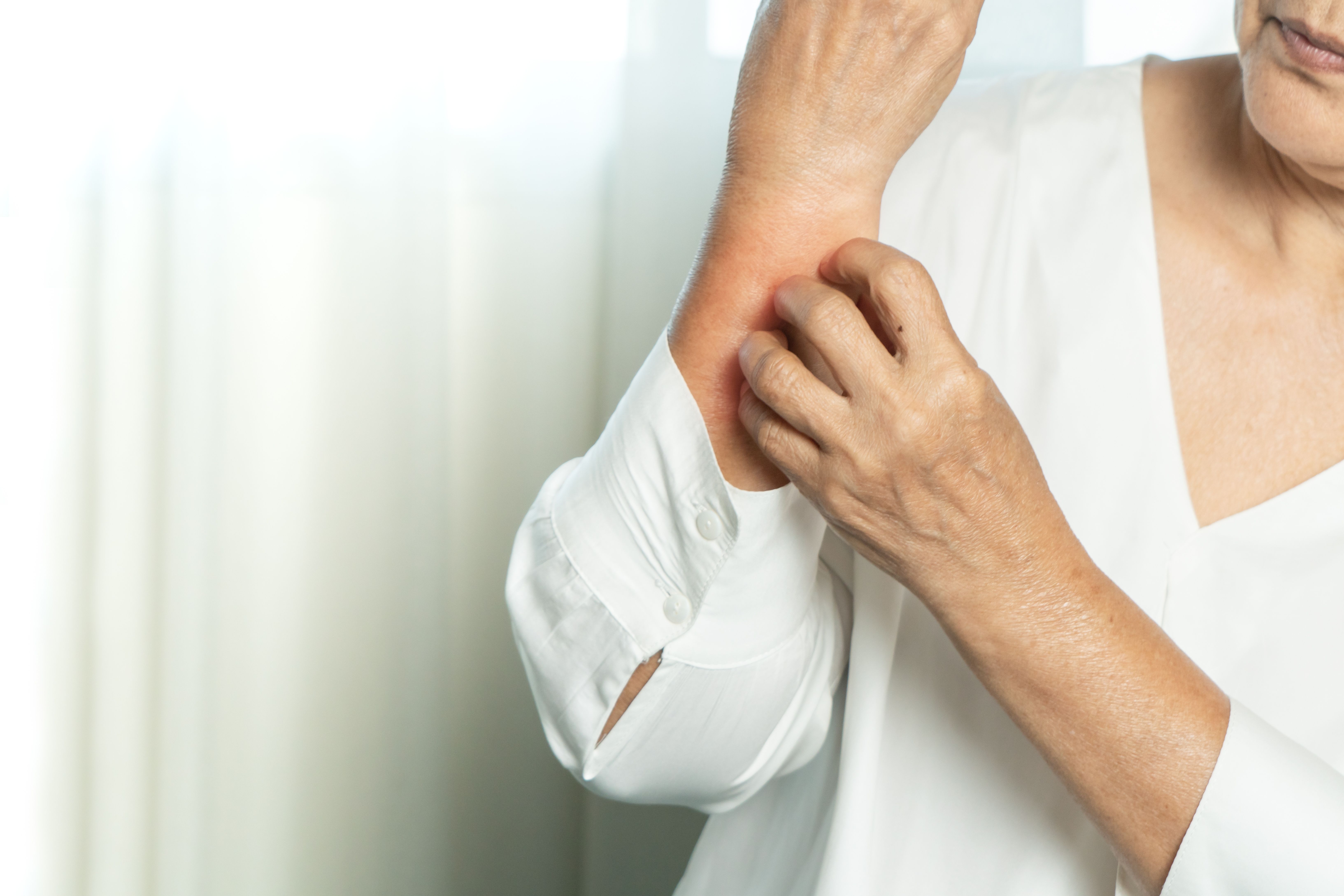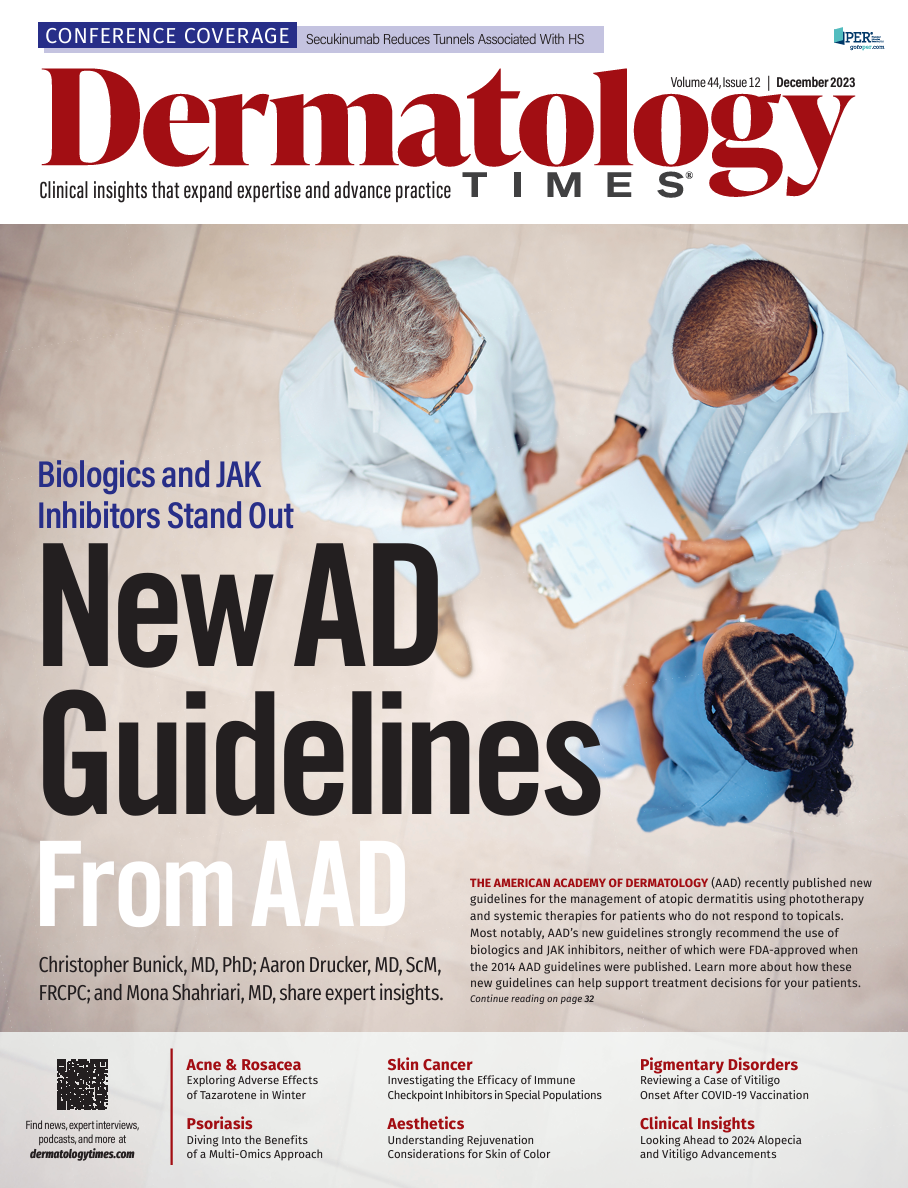- Case-Based Roundtable
- General Dermatology
- Eczema
- Chronic Hand Eczema
- Alopecia
- Aesthetics
- Vitiligo
- COVID-19
- Actinic Keratosis
- Precision Medicine and Biologics
- Rare Disease
- Wound Care
- Rosacea
- Psoriasis
- Psoriatic Arthritis
- Atopic Dermatitis
- Melasma
- NP and PA
- Skin Cancer
- Hidradenitis Suppurativa
- Drug Watch
- Pigmentary Disorders
- Acne
- Pediatric Dermatology
- Practice Management
- Prurigo Nodularis
- Buy-and-Bill
News
Article
Dermatology Times
ADORING 1 and 2 Results: Tapinarof Cream 1% Yields ‘Clinically Meaningful Pruritus Improvements’
Author(s):
Poster presented at American College of Allergy, Asthma and Immunology (ACAAI) 2023 Annual Scientific Meeting yields positive results for adults and children 2 years age and up.
PORNCHAISODA/Adobestock

Tapinarof cream showed safety and efficacy in ADORING 1 and ADORING 2 trials, according to a poster presented at the American College of Allergy, Asthma and Immunology (ACAAI) 2023 Annual Scientific Meeting in Anaheim, California.
The results come from ADORING 1 AND 2, which were phase 3 double-blind trials of tapinarof cream 1% QD. ADORING 1 consisted of 407 patients with moderate to severe atopic dermatitis (AD) while ADORING 2 included 406 patients wit AD. Youth participants were grouped by age (2–6 years, 7–11 years, and 12–17 years), with about 15% of the total participants spread across each of the brackets. About 20% of the study participants were adults (aged ≥18 years), and the mean age was 15.6 to 16.7 years (range 2–81 years). Just under half of the patients were male (43.0–48.2%).
The majority of the patients in both studies were considered to have moderate AD, with a Validated Investigator Global Assessment for Atopic Dermatitis (vIGA-ADTM) score of 3. About 10% of the participants were considered severe with a vIGA-ADTM score of 4, and the mean baseline Peak Pruritus Numerical Rating Scale (PP-NRS) were similar across groups and treatments.
Patients were randomized at a ratio of 2:1 to the study agent versus vehicle cream for 8 weeks. Patients were eligible to participate in an open-label extension trial; those who did not completed a follow-up visit. The investigators also looked at PP-NRS response as a secondary efficacy endpoint.
Silverberg et al found tapinarof cream to be efficacious, with relief evident as early as 24 hours after application during the first assessment and increasing improvements in ADORING 1 and ADORING 2. At week 8, PP-NRS response for all participants in the treatment group regardless of age was better than that of the control group; response in ADORING 1 was 61.1% versus 34.0% and 57.4% versus 33.0% in ADORING 2 (treatment versus controls; P<0.0001).
In addition, response was statistically significant when exploring age groups for participants who were under 12 years and for those 12 years or older. PP-NRS response for the younger cohort for ADORING 1 and ADORING 2, respectively, was 60.7% versus 28.0% (P=0.0001) and 60.0% versus 40.8% (P=0.0414). For patients 12 and older, PP-NRS response was 55.8% versus 34.2% (P=0.0366) and 52.8% versus 24.1% (P=0.0015) for ADORING 1 and ADORING 2, respectively.
Moreover, the investigators reported that tapinarof was well-tolerated; they indicated the safety profile was consistent with previous studies. Folliculitis headaches and nasal pharyngitis were the most frequent adverse events. Discontinuation rates due to adverse effects were lower in the treatment group than the vehicle group.
A nonsteroidal, small molecule topical aryl hydrocarbon receptor (AhR) agonist, tapinarof was first‐in‐class and approved by the US Food and Drug Administration for the treatment of plaque psoriasis in adults. It currently is being studied for the treatment of plaque psoriasis in children at least 2 years old as well as for AD for children 2 years and older and adults.
“Tapinarof cream 1% QD demonstrated statistically significant and clinically meaningful pruritus improvements versus vehicle for adults and children down to 2 years of age with AD,” concluded Silverberg and colleagues. “Tapinarof is a once-daily non-steroidal cream that rapidly reduces pruritus in patients down to 2 years of age with AD, and has the potential to be used without restrictions on duration of use, extent of body surface area treated, or sites of application.”
Additional and continuing coverage of the American College of Allergy, Asthma and Immunology (ACAAI) 2023 Annual Scientific Meeting can be found at DermatologyTimes.com.
Reference
Silverberg J, Boguniewicz M, Rubenstein D et al. Tapinarof cream improved itch in two phase 3 trials of moderate to severe atopic dermatitis. Poster presented at: American College of Allergy, Asthma and Immunology 2023 Annual Scientific Meeting; November 9-14, 2023; Anaheim, CA. P282.







